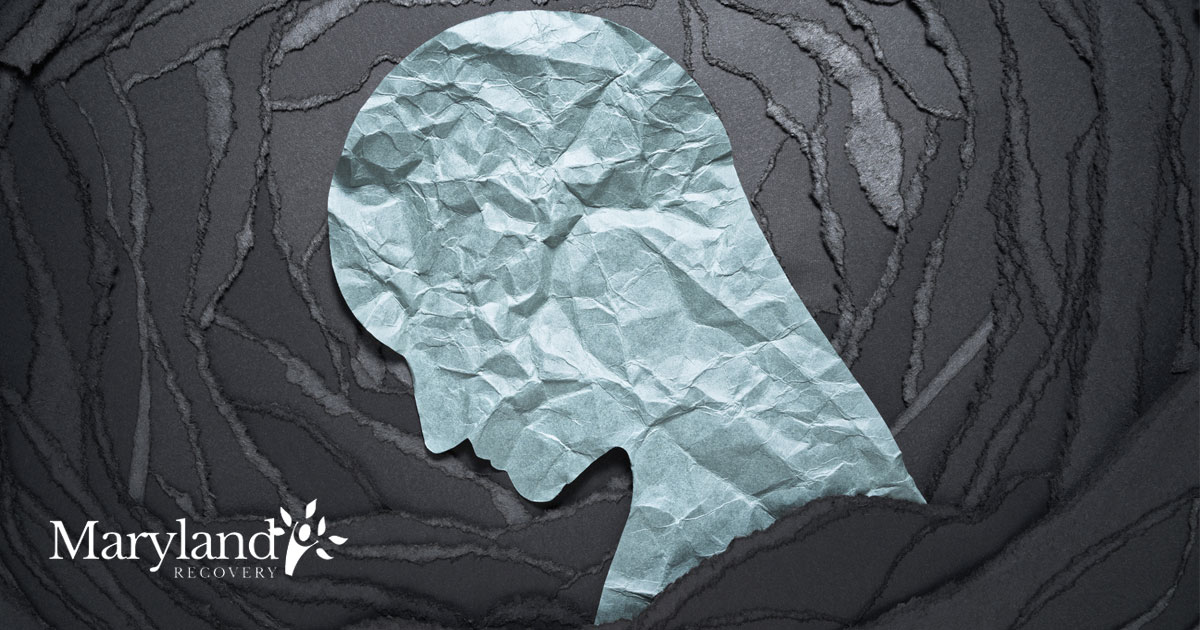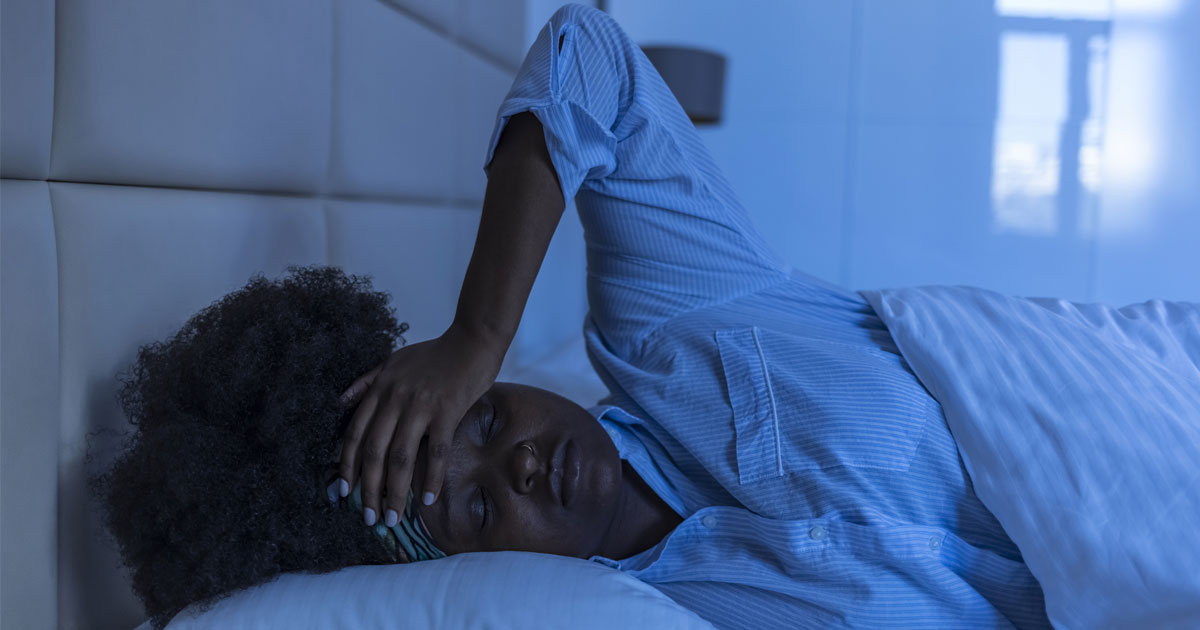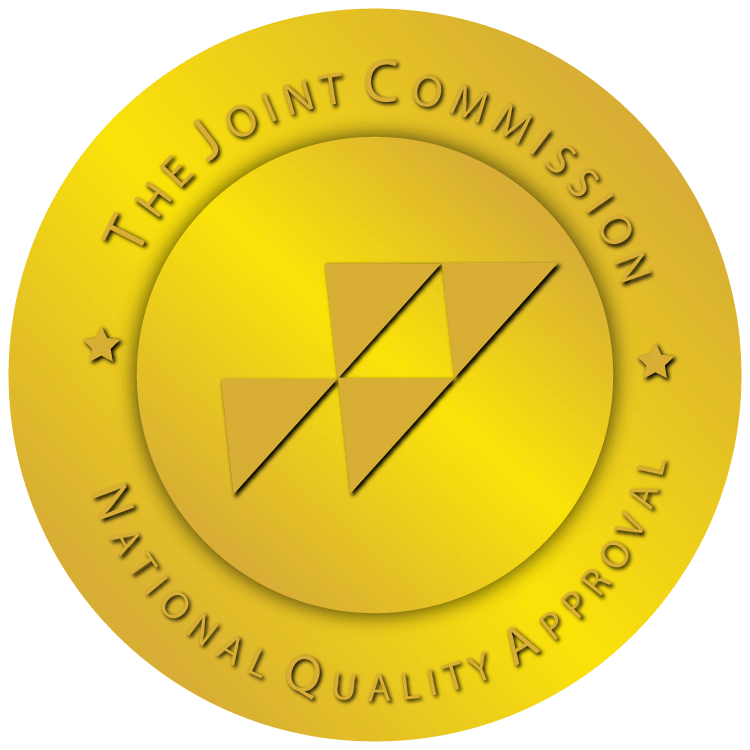
Anxiety and addiction as a dual diagnosis is rarely discussed. As the most common mental illness in the United States, anxiety disorder affects 40 million adults or 19% of the U.S. population aged 18 and above. Anxiety is the mind and body’s reaction to situations deemed stressful, dangerous, or unfamiliar and is a normal reaction to help you stay alert and aware of your surroundings. However, too much anxiety can negatively affect your daily life.
Many of us are all too familiar with symptoms of anxiety. Mild symptoms can include restlessness, insomnia, brain fog, a lack of concentration, and irrational fears. Symptoms that point to more severe anxiety can include nausea, heart palpitations, paranoia, or panic attacks. Anxiety shifts into an anxiety disorder when it is severe, unmanageable, unexpected, and affects your life.
How Do Anxiety Disorders Develop?
Anxiety disorders can stem from a complex combination of risk factors, including genetics, brain chemistry, personality, and life events. These disorders often develop over years of experiences with environmental factors, such as a stressful job, an unhealthy relationship, a rough upbringing, or other traumas and fears. During these stressful situations, the structure in the brain known as the amygdala sends signals to other parts of the brain to release adrenaline. This sudden boost in adrenaline can cause quick breathing, a fast heart rate, and sweating.
When the amygdala sends signals to the hypothalamus after perceiving potential danger, you may go into fight or flight mode, all while experiencing a further increased heart rate and heightened blood pressure. If anxiety is triggered often, it can develop into a disorder where you begin to agonize over daily routines, suffer from worry that is out of proportion to the actual circumstance, and experience anxiety symptoms on a regular basis.
Many people with anxiety disorders avoid social situations, whether out of fear others are judging them or because they have experienced trauma related to a social situation. Others feel a pervasive feeling of apprehension or dread for no apparent reason. People with PTSD may experience flashbacks or daydreams that place them right back into the situation that caused the initial trauma.
According to the ADAA, although people can improve their anxiety symptoms with treatment, only 37% ever seek professional treatment. Suffering from an anxiety disorder also makes people more vulnerable to other mental health disorders. People are approximately four times more likely to see a doctor for a second illness if they have an anxiety disorder and even more likely to experience psychiatric hospitalization—especially if the anxiety goes untreated.
The Connection Between Anxiety and Addiction
Those with anxiety disorders are more likely to turn to alcohol and drugs, often as a way to cope with the symptoms of anxiety. According to the National Institute on Drug Abuse, it is estimated that individuals with anxiety are twice as likely to suffer from substance abuse disorder (SUD) as those without anxiety disorders. Unfortunately, these attempts at self-medication often backfire when individuals develop a dependence on the substance of choice. Without these substances, the psychological and physical symptoms of anxiety become much worse.
Anxiety is highly treatable, but most people need assistance from a mental health professional to do so well before SUD becomes a factor. It’s important to learn more about the connection between anxiety and addiction, how substances can make anxiety worse, how to identify SUD and anxiety, and how to find the correct dual diagnosis treatment program. No matter what caused your anxiety, it should be identified, managed, and treated to avoid increased vulnerability to SUD and improve your chances of a happy, healthy life.
Start by taking our quick 15-question quiz to assess your own anxiety levels.

Do You Have Anxiety? Take the Online Anxiety Quiz
Have you been experiencing unexplained fear over even the most ordinary or mundane situations? Have you been avoiding certain places or social situations? Having trouble falling or staying asleep? Take our quick, 15-question quiz to see if what you’re experiencing might be anxiety.
Anxiety and Addiction: Dual Diagnosis
A dual diagnosis occurs when an individual experiences a substance use disorder and another mental health disorder simultaneously. Researchers from the ADAA estimate that around 20% of people treated for anxiety have also suffered from a co-occurring SUD in the past year. Another study found that nearly 18% of people treated for SUD also have a co-occurring anxiety disorder.
Anxiety can manifest itself in many ways, and as a result, the specific terms used in the dual diagnosis vary as well. Some of the most frequently diagnosed anxiety disorders include the following.
Generalized Anxiety Disorder (GAD)
Those with GAD suffer from a continuous sense of dread that manifests for no specific reason. Worries are blown out of proportion and multiplied on top of one another despite lacking any true connection. Even though these worries feel extremely powerful, they often have little to no basis in reality.
Social Anxiety Disorder (SAD)
People who suffer from SAD have an unreasonable fear of interacting with other people. They avoid large crowds, public speaking, and other typical social situations. Those with SAD feel helpless and out of control and frequently hide from social situations to avoid feeling embarrassed, humiliated, or judged.
Post-Traumatic Stress Disorder (PTSD)
PTSD can develop in people who have gone through a traumatic event such as military combat or sexual assault. People with PTSD are frequently forced to relive this traumatic event, which causes heightened awareness and a persistent state of fight or flight. PTSD can manifest itself in flashbacks and nightmares triggered by a familiar sight, sound, or even smell. These instances can lead to paranoia, irritability, and avoidance of others.
Panic Disorder
Those with panic disorders experience episodes of overwhelming and uncontrollable terror, doom, and even perceived impending death, despite there being no real source of danger. People may hyperventilate and experience a rapid heartbeat, chest pain, sweating, dizziness, and even nausea and vomiting.
Specific Phobias
People with phobias have an irrational fear of specific things or situations. These individuals will go far out of their way to avoid these things out of debilitating fear. Those with agoraphobia, for example, experience paralyzing fear of being in public or fear of having a panic attack in public. This can often cause extreme avoidance behaviors, and many people who suffer from agoraphobia are often too afraid to leave the house.
What Percent of People with Anxiety Do Drugs?
As mentioned, the ADAA estimates that 20 percent of people diagnosed with an anxiety disorder also have a co-occurring SUD. However, the substance used is not always drugs. According to a study published in the Psychiatric Times, anxiety disorders have been linked with especially high rates of alcohol misuse, as well as higher relapse rates after alcohol rehabilitation treatment. Anxious individuals may also experience more severe withdrawal symptoms after they quit using drugs or alcohol than other people with SUD.
All individuals who suffer from these anxiety disorders experience a wide variety of debilitating symptoms if left untreated. Anxious individuals may feel an intrusive fear, either specific or general, plaguing their daily routine. Their job performance may decline, along with the quality of their relationships and their ability to remain present in social activities. Individuals may also experience frightening physical symptoms like shortness of breath, rapid heartbeat, and nausea. Mounting financial difficulties, legal problems, relationship issues, and health troubles can often feel too much for people to bear.
Therefore, many people with anxiety feel the need to use alcohol and drugs to manage their anxiety symptoms. They may feel that this can help them regain some control and normalcy in their lives. However, alcoholism and drug use will only worsen the spiral of mounting symptoms.
How Does Anxiety Relate to Addiction?

Anxiety and substance use disorders share many symptoms and many connections with each other. This chicken-or-the-egg relationship makes it hard to tell if anxiety came first, substance use came first, or if both issues manifested simultaneously. Understanding the causes and triggers of a dual diagnosis can help individuals go down an effective path of recovery. While environmental stress, poor diet, and medical conditions can worsen anxiety disorders.
For some people, anxiety comes first and leads them down the path of self-medication. Drinking alcohol or ingesting opiates gives those with anxiety disorders a much-desired sense of calm and relaxation. In particular, anxiety disorders revolving around social settings can be debilitating enough for individuals to want to ease their discomforts with alcohol. This can lead to individuals struggling to enjoy their time spent with friends unless alcohol is involved. In some cases, they can only escape withdrawal and make it through the day by drinking.
However, the reverse is also true. Becoming addicted to drugs and alcohol can also cause anxiety. For example, cocaine impacts parts of the brain that correspond to stress. When a person uses cocaine, the release of stress hormones increases, encouraging dependency while also increasing the likelihood of anxiety disorders. Mental withdrawal from habitual alcoholism can also lead to severe mood changes and the onset of depression and anxiety.
What Substances Make Anxiety Worse?
While it is never a good idea to self-medicate to treat your anxiety, certain substances are known to particularly worsen anxiety. Recreational drugs like cocaine, LSD, methamphetamine, and PCP can cause hallucinations, increased heart rates, and many other symptoms that tend to cause anxiety to skyrocket. Alcohol, Xanax, Ativan, and other central nervous system depressants may initially deliver calming effects. However, excessive use can increase stress by impairing individuals’ mental and physical abilities.
It is also important to talk to your healthcare provider about any anxiety you experience while taking other medications. Stimulants, such as ADHD medication, work by boosting alertness and improving focus but can cause anxiety when dosed incorrectly. Medications or beverages with caffeine can also worsen anxiety. Even decongestants and antihistamines can trigger anxiety symptoms.
Is Anxiety a Form of Addiction?
A person suffering from a co-occurring anxiety disorder and SUD is caught in a spiral of increasing misery, growing dependent on damaging substances for increasingly shorter periods of freedom from irrational fear and worry. Therefore, while on the road to recovery, patients must carefully assess their own anxious habits to better understand themselves. For example, in our chaotic world, many people become reliant on the adrenaline rush created by anxiety and don’t know how to turn it off. For example, many of us obsessively watch the daily news about the latest natural disasters, political dramas, government corruption, and economic stress. This information overload, paired with our growing dependence on smartphones and social media, can lead to anxiety symptoms like insomnia, nightmares, and more. In a sense, anxiety can be addicting.
Anxiety is common and can be treated with a combination of therapy, medication, and lifestyle changes, including eliminating the substances you are using to self-medicate. Many patients in the recovery process fear that they are not truly capable of recovery, but this is false. Everyone struggling with substance use disorder and anxiety has the power to gain control of their lives and find happiness.
To overcome anxiety and achieve emotional freedom, doctors often suggest eliminating caffeine, sugar, and other stimulants from your diet. Watch who you interact with and what information you consume daily—avoid those who reinforce your fear and stick close to positive people. Learn to set healthy limits and boundaries with stress-inducing people and situations. Try your best to also stay solution-oriented in the present and be grateful for all the positives in life. Living in the now helps to prevent overthinking about potentially negative scenarios that may or may not happen in the future.
Meditation and mindfulness practices are useful tools that help those in recovery from SUD remain grounded in their surroundings, think more clearly, and breathe more easily. Meditation decreases stress responses and calms down the body. Learning to stay calm and in control of your anxiety is a necessary part of long-term SUD recovery. Those who use meditation are more likely to stay in recovery for longer periods of time, avoid situations that will lead to relapse, and achieve results such as relaxation, self-love, and improved focus.
The Progressive Muscular Relaxation Technique is a method of actively releasing stress from your body. Focus on breathing to the count of four while slowly concentrating on specific areas of the body, then relaxing the muscle groups in those areas. Easing tension in your body will also ease tension in your mind.
Find Programs to Treat Anxiety and Addiction as a Dual Diagnosis

If you believe you are experiencing anxiety in tandem with a substance use disorder, a professional treatment center can tailor a personalized treatment plan to begin your road to recovery. During recovery, it is critical for you to identify thoughts and physical sensations that cause anxiety and result in substance use.
Cognitive behavioral therapy can be utilized to help you change your thinking so you can face your fears head-on and adjust your mindsets while learning to cope with triggers for substance use. It’s important to foster a trusted circle of people, including family, friends, and self-help groups, so you recognize that fighting SUD is easier done together rather than alone. You may also receive anti-anxiety medication or forms of medically assisted treatment to help you cope with withdrawal symptoms. Our professionals offer exceptional treatment to those struggling with a dual diagnosis.
Sources:
- https://adaa.org/understanding-anxiety/facts-statistics
- https://adaa.org/understanding-anxiety/co-occurring-disorders/substance-abuse
- https://www.ncbi.nlm.nih.gov/pmc/articles/PMC2904966/
- https://www.ncbi.nlm.nih.gov/pmc/articles/PMC2921723/
Reviewed by Christopher Schwartfigure MS, LGPC, CAC-AD








